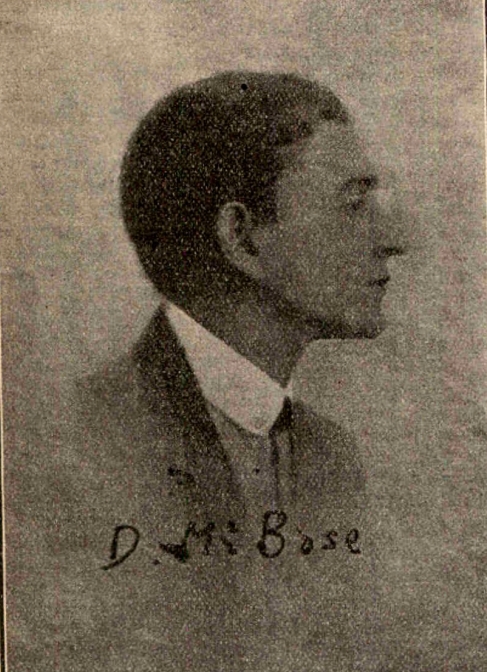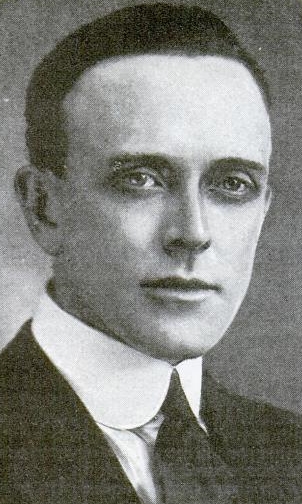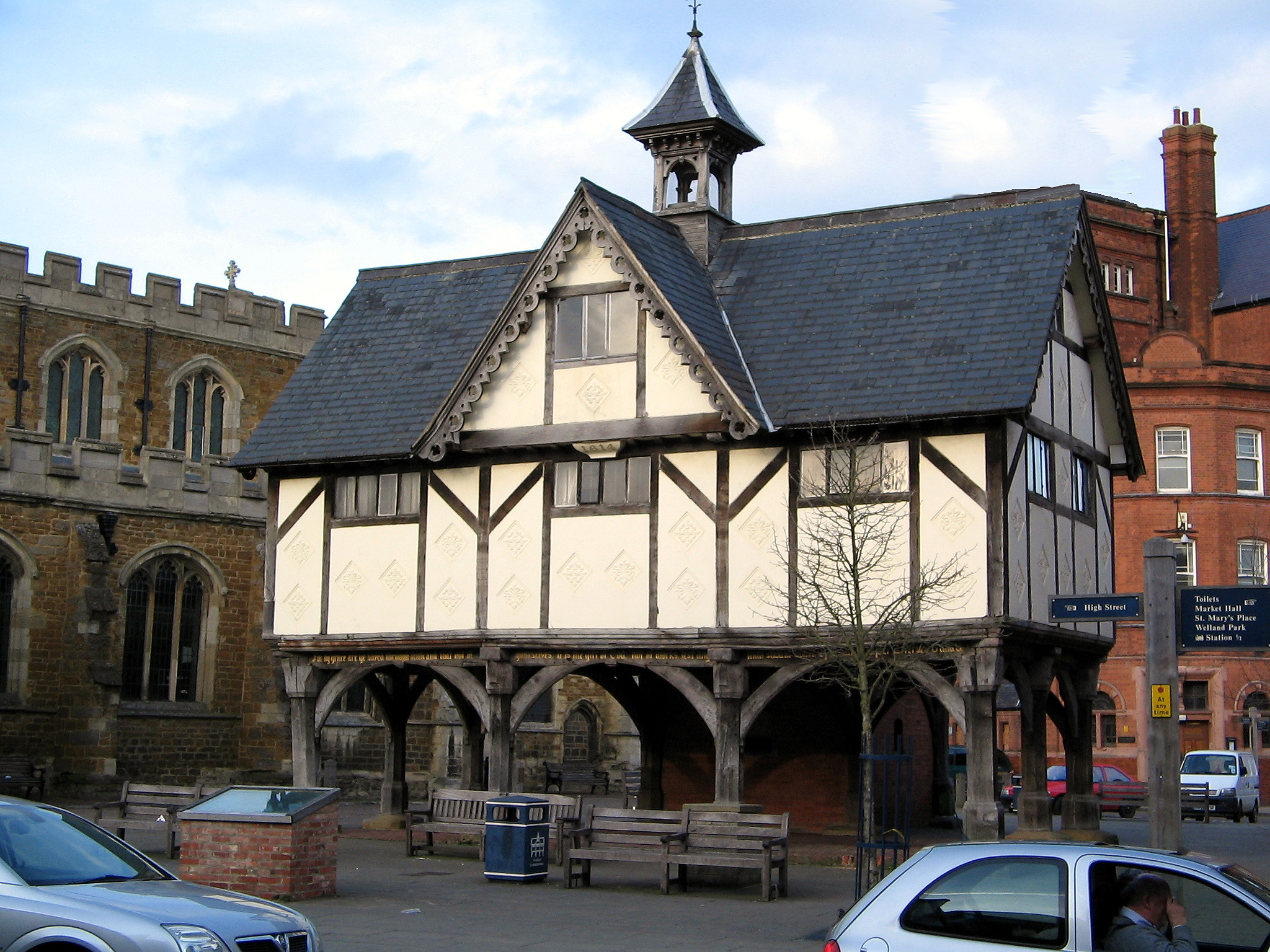|
J. J. Thomson
Sir Joseph John Thomson (18 December 1856 – 30 August 1940) was a British physicist and Nobel Laureate in Physics, credited with the discovery of the electron, the first subatomic particle to be discovered. In 1897, Thomson showed that cathode rays were composed of previously unknown negatively charged particles (now called electrons), which he calculated must have bodies much smaller than atoms and a very large charge-to-mass ratio. Thomson is also credited with finding the first evidence for isotopes of a stable (non-radioactive) element in 1913, as part of his exploration into the composition of canal rays (positive ions). His experiments to determine the nature of positively charged particles, with Francis William Aston, were the first use of mass spectrometry and led to the development of the mass spectrograph. Thomson was awarded the 1906 Nobel Prize in Physics for his work on the conduction of electricity in gases. Thomson was also a teacher, and several of his ... [...More Info...] [...Related Items...] OR: [Wikipedia] [Google] [Baidu] |
Cheetham Hill
Cheetham is an inner-city area and electoral ward of Manchester, England, which in 2011 had a population of 22,562. It lies on the west bank of the River Irk, north of Manchester city centre, close to the boundary with Salford, bounded by Broughton to the north, Harpurhey to the east, and Piccadilly and Deansgate to the south. Historically part of Lancashire, Cheetham was a township in the parish of Manchester and hundred of Salford. The township was amalgamated into the Borough of Manchester in 1838, and in 1896 became part of the North Manchester township. Cheetham is home to a multi-ethnic community, a result of several waves of immigration to Britain. In the mid-19th century, it attracted Irish people fleeing the Great Famine. It is now home to the Irish World Heritage Centre. Jews settled in the late-19th and early-20th centuries, fleeing persecution in continental Europe. Migrants from the Indian subcontinent and Caribbean settled in the 1950s and 1960s, and more rec ... [...More Info...] [...Related Items...] OR: [Wikipedia] [Google] [Baidu] |
Ernest Rutherford
Ernest Rutherford, 1st Baron Rutherford of Nelson, (30 August 1871 – 19 October 1937) was a New Zealand physicist who came to be known as the father of nuclear physics. ''Encyclopædia Britannica'' considers him to be the greatest experimentalist since Michael Faraday (1791–1867). Apart from his work in his homeland, he spent a substantial amount of his career abroad, in both Canada and the United Kingdom. In early work, Rutherford discovered the concept of radioactive half-life, the radioactive element radon, and differentiated and named alpha and beta radiation. This work was performed at McGill University in Montreal, Quebec, Canada. It is the basis for the Nobel Prize in Chemistry he was awarded in 1908 "for his investigations into the disintegration of the elements, and the chemistry of radioactive substances", for which he was the first Oceanian Nobel laureate, and the first to perform the awarded work in Canada. In 1904, he was elected as a member to the A ... [...More Info...] [...Related Items...] OR: [Wikipedia] [Google] [Baidu] |
Lawrence Bragg
Sir William Lawrence Bragg, (31 March 1890 – 1 July 1971) was an Australian-born British physicist and X-ray crystallographer, discoverer (1912) of Bragg's law of X-ray diffraction, which is basic for the determination of crystal structure. He was joint recipient (with his father, William Henry Bragg) of the Nobel Prize in Physics in 1915, "For their services in the analysis of crystal structure by means of X-rays"; an important step in the development of X-ray crystallography. Bragg was knighted in 1941. As of 2021, he is the youngest ever Nobel laureate in physics, having received the award at the age of 25 years. Bragg was the director of the Cavendish Laboratory, Cambridge, when the discovery of the structure of DNA was reported by James D. Watson and Francis Crick in February 1953. Biography Early years Bragg was born in Adelaide, South Australia to Sir William Henry Bragg (1862–1942), Elder Professor of Mathematics and Physics at the University of Adelai ... [...More Info...] [...Related Items...] OR: [Wikipedia] [Google] [Baidu] |
Debendra Mohan Bose
Debendra Mohan Bose (26 November 1885 – 2 June 1975) was an Indian physicist who made contributions in the field of cosmic rays, artificial radioactivity and neutron physics. He was the longest serving Director (1938–1967) of Bose Institute. Bose was the nephew of the famous physicist Jagadish Chandra Bose, who laid the foundations of modern science in India. Education in Europe In 1907, he joined the Christ's College, Cambridge, and worked with prominent physicists including J. J. Thomson and Charles Thomson Rees Wilson at the Cavendish Laboratory. In 1910, he joined the Royal College of Science in London, from where he obtained a diploma and a BSc (first class) in Physics in 1912. Later, he returned to Calcutta and taught physics in the City College, Kolkata in 1913. In 1914, D M Bose was appointed the Rashbehary Ghosh Professor of Physics in the newly founded Calcutta University College of Science. He was awarded the Ghosh Travel Fellowship for studying abroa ... [...More Info...] [...Related Items...] OR: [Wikipedia] [Google] [Baidu] |
Niels Bohr
Niels Henrik David Bohr (; 7 October 1885 – 18 November 1962) was a Danish physicist who made foundational contributions to understanding atomic structure and quantum theory, for which he received the Nobel Prize in Physics in 1922. Bohr was also a philosopher and a promoter of scientific research. Bohr developed the Bohr model of the atom, in which he proposed that energy levels of electrons are discrete and that the electrons revolve in stable orbits around the atomic nucleus but can jump from one energy level (or orbit) to another. Although the Bohr model has been supplanted by other models, its underlying principles remain valid. He conceived the principle of complementarity: that items could be separately analysed in terms of contradictory properties, like behaving as a wave or a stream of particles. The notion of complementarity dominated Bohr's thinking in both science and philosophy. Bohr founded the Institute of Theoretical Physics at the University of ... [...More Info...] [...Related Items...] OR: [Wikipedia] [Google] [Baidu] |
Geoffrey Ingram Taylor
Sir Geoffrey Ingram Taylor OM FRS FRSE (7 March 1886 – 27 June 1975) was a British physicist and mathematician, and a major figure in fluid dynamics and wave theory. His biographer and one-time student, George Batchelor, described him as "one of the most notable scientists of this (the 20th) century". Early life and education Taylor was born in St. John's Wood, London. His father, Edward Ingram Taylor, was an artist, and his mother, Margaret Boole, came from a family of mathematicians (his aunt was Alicia Boole Stott and his grandfather was George Boole). As a child he was fascinated by science after attending the Royal Institution Christmas Lectures, and performed experiments using paint rollers and sticky-tape. Taylor read mathematics and physics at Trinity College, Cambridge from 1905 to 1908. Then he obtained a scholarship to continue at Cambridge under J. J. Thomson. Career and research To students of physics, Taylor is best known for his very first paper, publishe ... [...More Info...] [...Related Items...] OR: [Wikipedia] [Google] [Baidu] |
Balthasar Van Der Pol
Balthasar van der Pol (27 January 1889 – 6 October 1959) was a Dutch physicist. Life and work Van der Pol began his studies of physics in Utrecht in 1911. J. A. Fleming offered van der Pol the use of the Pender Electrical Laboratory at University College for a study of the heuristics of wireless reception on board ships. In England he also worked with J. J. Thomson. Upon his return to the Netherlands, Balthsar worked with Hendrik Lorentz at Teylers Stichting. For his thesis he wrote ''The effect of an ionised gas on electro-magnetic wave propagation and its application to radio, as demonstrated by glow-discharge measurement'' under the supervision of Willem Henri Julius. He was awarded his Ph.D. in 1920. He joined Philips Research Laboratories in 1921, where he worked until his retirement in 1949. As observed by Hendrik Casimir, "Radio might have remained a field of haphazard empiricism along with wild commercial ventures, but for the influence of men like Van der P ... [...More Info...] [...Related Items...] OR: [Wikipedia] [Google] [Baidu] |
Paul Langevin
Paul Langevin (; ; 23 January 1872 – 19 December 1946) was a French physicist who developed Langevin dynamics and the Langevin equation. He was one of the founders of the ''Comité de vigilance des intellectuels antifascistes'', an anti-fascist organization created after the 6 February 1934 far right riots. Being a public opponent of fascism in the 1930s resulted in his arrest and being held under house arrest by the Vichy government for most of World War II. Langevin was also president of the Human Rights League (LDH) from 1944 to 1946, having recently joined the French Communist Party. He was a doctoral student of Pierre Curie and later a lover of widowed Marie Curie. He is also known for his two US patents with Constantin Chilowsky in 1916 and 1917 involving ultrasonic submarine detection. He is entombed at the Panthéon. Life Langevin was born in Paris, and studied at the '' École de Physique et Chimie'' and the '' École Normale Supérieure''. He then we ... [...More Info...] [...Related Items...] OR: [Wikipedia] [Google] [Baidu] |
Max Born
Max Born (; 11 December 1882 – 5 January 1970) was a German physicist and mathematician who was instrumental in the development of quantum mechanics. He also made contributions to solid-state physics and optics and supervised the work of a number of notable physicists in the 1920s and 1930s. Born won the 1954 Nobel Prize in Physics for his "fundamental research in quantum mechanics, especially in the statistical interpretation of the wave function". Born entered the University of Göttingen in 1904, where he met the three renowned mathematicians Felix Klein, David Hilbert, and Hermann Minkowski. He wrote his PhD thesis on the subject of "Stability of Elastica in a Plane and Space", winning the university's Philosophy Faculty Prize. In 1905, he began researching special relativity with Minkowski, and subsequently wrote his habilitation thesis on the Thomson model of the atom. A chance meeting with Fritz Haber in Berlin in 1918 led to discussion of how an ionic compou ... [...More Info...] [...Related Items...] OR: [Wikipedia] [Google] [Baidu] |
Daniel Frost Comstock
Daniel Frost Comstock ; (August 14, 1883 – March 2, 1970) was an American physicist and engineer. Biography Comstock attained a B.S. from the Massachusetts Institute of Technology in 1904. He also studied in Berlin, Zürich, and Basel, where he attained his Ph.D. in 1906. At the University of Cambridge (1906–1907) he studied under J. J. Thomson. Beginning in 1904 he was a member of the faculty at MIT in theoretical physics (assistant professor 1910–1915; associate professor 1915–1917). Comstock is most well known as the co-founder of the company Kalmus, Comstock & Westcott, and of Technicolor Motion Picture Corporation, which developed the second major color film process, after Britain's Kinemacolor, and the most widely used color motion picture process in Hollywood from 1922 to 1952.Tom Huntington, AmericanHeritageFROM BLACK & WHITE TO TECHNICOLOR Comstock also published some theoretical papers in the fields of electrodynamics (1908), special relativity (1910a) (see ... [...More Info...] [...Related Items...] OR: [Wikipedia] [Google] [Baidu] |
John Zeleny
John Zeleny (March 26, 1872 – June 19, 1951) was an American physicist who, in 1911, invented the Zeleny electroscope. He also studied the effect of an electric field on a liquid meniscus. His work is seen by some as a beginning to emergent technologies like liquid metal ion sources and electrospraying and electrospinning. Zeleny was born in Racine, Wisconsin to a Czech immigrant couple from Křídla. He was the older brother of Charles Zeleny. He attended the University of Minnesota (B.S., 1892), followed by Trinity College, Cambridge Trinity College is a constituent college of the University of Cambridge. Founded in 1546 by King Henry VIII, Trinity is one of the largest Cambridge colleges, with the largest financial endowment of any college at either Cambridge or Oxford. ... (B.A., 1899), and the University of Minnesota (PhD, 1906). Zeleny began his teaching career at the University of Minnesota after earning his B.A. in 1892. In 1915, he joined the faculty at Yale ... [...More Info...] [...Related Items...] OR: [Wikipedia] [Google] [Baidu] |
William Henry Bragg
Sir William Henry Bragg (2 July 1862 – 12 March 1942) was an English physicist, chemist, mathematician, and active sportsman who uniquelyThis is still a unique accomplishment, because no other parent-child combination has yet shared a Nobel Prize (in any field). In several cases, a parent has won a Nobel Prize, and then years later, the child has won the Nobel Prize for separate research. An example of this is with Marie Curie and her daughter Irène Joliot-Curie, who are the only mother-daughter pair. Several father-son pairs have won two separate Nobel Prizes. shared a Nobel Prize with his son Lawrence Bragg – the 1915 Nobel Prize in Physics: ''"for their services in the analysis of crystal structure by means of X-rays"''. The mineral Braggite is named after him and his son. He was knighted in 1920. Biography Early years Bragg was born at Westward, near Wigton, Cumberland, England, the son of Robert John Bragg, a merchant marine officer and farmer, and hi ... [...More Info...] [...Related Items...] OR: [Wikipedia] [Google] [Baidu] |







